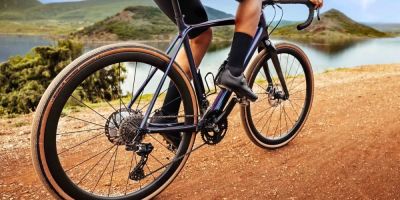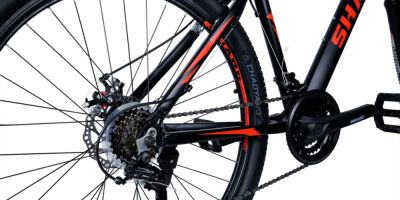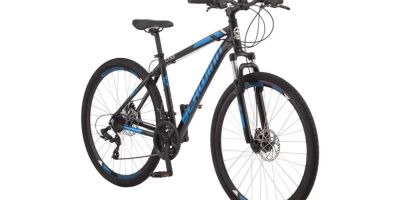How to Prevent Injuries While Cycling: Essential Tips for Safety
Cycling has always been one of my favorite activities. The freedom of the open road, the wind in your face, and the sense of adventure make it an exhilarating experience. However, as much as I enjoy cycling, I’ve come to realize that there are certain risks involved, just like with any other sport. Injuries are a common occurrence among cyclists, ranging from minor discomforts to more serious issues like sprains or fractures. Over the years, I’ve learned a lot about how to avoid these injuries, and I’d like to share some of the most effective tips to help you stay safe and injury-free while cycling.
1. Proper Bike Fit: The Foundation of Injury Prevention
One of the first things I learned when I started cycling seriously was the importance of having the right bike fit. It’s something that many new cyclists overlook, but it can make all the difference in preventing injuries. An improper bike fit can lead to a variety of problems, such as knee pain, back pain, and neck strain.
The key elements of a proper bike fit include seat height, handlebar height, and the position of your pedals. If your seat is too high or too low, it can lead to discomfort in your knees, especially during long rides. On the other hand, having the handlebars positioned too far forward or backward can strain your back and neck, causing pain over time.
When I first started cycling, I didn’t realize how much of an impact a proper bike fit could have. After visiting a professional bike fitter, I noticed a dramatic improvement in my comfort and performance. If you're unsure whether your bike is properly fitted, I highly recommend visiting a local bike shop where experts can make adjustments for you.
2. Warm-Up and Stretching: Preparing Your Body
Before heading out for a ride, I’ve learned that warming up and stretching are essential for preventing injuries. Just like with any physical activity, cycling places strain on your muscles, joints, and ligaments. Warming up allows your body to gradually adjust to the demands of cycling, reducing the risk of muscle strains and sprains.
Warming up doesn’t have to be complicated. A simple 5 to 10-minute light cycling session on a stationary bike or a gentle ride around the block can help get your muscles ready for the road ahead. After warming up, I always make sure to stretch my legs, hips, and lower back. Stretching helps increase flexibility and blood flow to these areas, which can help prevent tightness and discomfort during the ride.
Some specific stretches I do include calf stretches, hamstring stretches, and hip flexor stretches. I find that focusing on these muscle groups helps me avoid the stiffness and soreness that can come from prolonged cycling. Don’t skip this step—trust me, it’s worth it!
3. Build Strength and Endurance: Train Your Muscles
One of the most important things I’ve learned in my cycling journey is that strengthening the muscles used in cycling can help prevent injuries in the long run. Cycling primarily engages the quadriceps, hamstrings, glutes, calves, and core muscles. Over time, repetitive cycling without strength training can lead to muscle imbalances and overuse injuries.
To combat this, I’ve incorporated strength training into my routine. I focus on exercises that target the legs and core, such as squats, lunges, and leg presses. These exercises help strengthen the muscles that I rely on for cycling, making them less prone to fatigue and injury.
Additionally, I make sure to incorporate core exercises into my routine. A strong core helps improve posture on the bike, reducing the strain on my lower back and neck. Planks, Russian twists, and leg raises are just a few examples of core exercises that have helped me maintain a strong and stable riding position.
4. Proper Hydration and Nutrition: Fueling Your Ride
Hydration and nutrition are often overlooked aspects of injury prevention, but I’ve learned the hard way how important they are. When cycling for long distances or in hot weather, it’s easy to become dehydrated, which can lead to cramps, fatigue, and even heatstroke. Staying hydrated is essential for maintaining muscle function and preventing injuries.
During my rides, I always carry a water bottle and make sure to drink regularly, even if I don’t feel thirsty. I also bring along electrolyte tablets or drinks to help replenish the minerals lost through sweat, especially on longer rides. Electrolytes like sodium, potassium, and magnesium are crucial for maintaining muscle function and preventing cramping.
In addition to hydration, fueling your body with the right nutrients is key. I make sure to eat a balanced meal before my rides, focusing on carbohydrates for energy, protein for muscle repair, and healthy fats for endurance. Snacks like energy bars or fruits are also great for keeping my energy levels up during long rides. I’ve found that paying attention to my nutrition and hydration has helped me feel more energized and less prone to injuries.
5. Use Protective Gear: Safety First
No matter how experienced or cautious you are, accidents can happen. That’s why I never ride without the proper protective gear. Wearing the right gear is one of the easiest ways to minimize the risk of injury in case of a fall or collision. The most important piece of gear is, of course, a helmet. I’ve had a few close calls while riding, and I’m grateful that I was wearing my helmet each time.
In addition to a helmet, I recommend wearing padded cycling shorts to reduce pressure on your sit bones, especially on longer rides. Padded gloves are also great for protecting your hands from blisters and reducing vibration in your hands and wrists. If you plan to ride in low light conditions, reflective gear or lights are essential for making yourself visible to others on the road.
It’s also important to check your bike’s safety equipment regularly. Make sure your brakes are working properly, your tires are inflated to the correct pressure, and your chain is clean and well-lubricated. Maintaining your bike not only helps prevent accidents but also ensures a smoother and more enjoyable ride.
6. Pay Attention to Your Riding Technique
As much as I love cycling, I’ve realized that my riding technique plays a big role in preventing injuries. Poor technique can lead to unnecessary strain on your joints and muscles. One of the most common mistakes I see among cyclists is improper pedal stroke. When I first started, I was focusing too much on pushing down on the pedals and not enough on completing a smooth circular motion.
To improve my technique, I focused on making a more fluid, circular pedal stroke. By pulling up on the pedals as well as pushing down, I was able to engage more muscles and reduce the strain on my knees. Proper gear selection is also important for injury prevention. I’ve learned that riding in too high of a gear can strain my knees, while riding in too low of a gear can lead to inefficient pedaling and muscle fatigue.
One of the best ways to improve your technique is to practice in a controlled environment, such as a park or a flat, quiet road. By focusing on smooth pedal strokes and maintaining a relaxed, upright posture, you can reduce the risk of developing injuries over time.
SEO Title: How to Prevent Injuries While Cycling: Essential Tips for Cyclists
SEO Keywords: prevent cycling injuries, injury prevention for cyclists, cycling safety tips, cycling injury prevention, cycling tips for safety
SEO Description: Discover essential tips for preventing injuries while cycling. Learn about bike fit, warm-up techniques, hydration, and more to keep yourself safe and injury-free during your rides.










